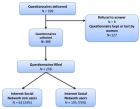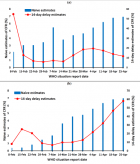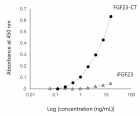Abstract
Research Article
Confirmatory Factor Analysis of the Scale that Measures Biosecurity in the Face of the SDGs and COVID-19
Arger Bundestappen Nanz*, Cruz García Lirios and María del Rosario Molina González
Published: 21 July, 2025 | Volume 6 - Issue 2 | Pages: 055-066
The pandemic has been observed as a security phenomenon due to the dimensions it entails, although these dimensions have not been confirmed. The objective of this work was to compare the theoretical structure of security with empirical observations. A cross-sectional, correlational, psychometric, and confirmatory study was conducted with a sample of 100 students selected for their affiliation with institutions committed to implementing the SDGs. The results confirm four of the seven dimensions, and the extension of the model is recognized as an area of opportunity to confirm the remaining three dimensions. It is recommended to expand the number of items and the sample size to increase the total percentage of variance and align the empirical model with the theoretical model reported in the literature.
Read Full Article HTML DOI: 10.29328/journal.jcmhs.1001060 Cite this Article Read Full Article PDF
Keywords:
Training; Organization; Violence; Sexism; Benevolence
References
- Cañoles J. Beyond mobbing: workplace stories of institutional violence in a managerial organization; experience in a public institution. Rev Sul-americana Psicol. 2018;4(1):1–45. Available from: http://ediciones.ucsh.cl/ojs/index.php/RSAP/article/view/1774
- Contreras Beltrán VM, Aguirre Y Hernández F, Roldán Reyes E, Romero Flores E, Cabrera Zepeda G. A work-related comment processor that detects bullying through sentimental analysis. ESPE Links J. 2022;7(1):79–87.
- García Heredia FJ, Guillén Rodríguez S. What are the effects of workplace bullying in work environments? Cienc Tecnol Cult. 2018;(63). Available from: https://erevistas.uacj.mx/ojs/index.php/culcyt/article/view/2212
- García Lirios C. Occupational risk perceptions in the post-COVID-19 era. Know Share Psychol. 2021;2(1). Available from: https://www.heraldopenaccess.us/openaccess/occupational-risk-perceptions-network-in-the-covid-19-era
- García-Lirios C. Tutorial networks in the development of research protocols. Comun Cult Polit. 2021;12. Available from: https://revistas.unicolmayor.edu.co/index.php/ccpolitica/article/view/3083
- Castel G, Freundlich F. Perceptions of cooperative members and non-members about job satisfaction. Revesco. 2010;103:33–58.
- Castro M, Martins M. The relationships between organizational climate and employee satisfaction in information and technology organization. Tydskr Bredyfsielkd. 2010;36:1–9. Available from: http://dx.doi.org/10.4102/sajip.v36i1.800
- Caykoylu S, Egri C, Havlovic S, Bradley C. Key organizational commitment antecedents for nurses, paramedical professionals and non-clinical staff. J Health Organ Manag. 2011;25:7–33. Available from: https://doi.org/10.1108/14777261111116806
- Fuentes F, Sánchez S. Analysis of the entrepreneurial profile: a gender perspective. Estud Econ Apl. 2010;28:1–28.
- Adenike A. Organization climate as a predictor of employee job satisfaction. Bus Intell J. 2011;4:151–66.
- Molero F, Recio P, Cuadrado I. Transformational and transactional leadership: a factor structure analysis of the Multifactor Leadership Questionnaire (MLQ). Psicothema. 2010;22:495–501.
- Coronel A. Human capital training for development investment. Eureka. 2010;7:71–6.
- Díaz S. The human in organizational theory. Vis Gerenc. 2013;12:45–57.
- Guillén M, Lleó A, Perles G. Rethinking trust as a critical factor in organizational management. Cuad Gestión. 2011;11:33–47. Available from: https://doaj.org/article/8054680679e2497fbc51cdeee0a84b40
- Carreón J. The fight against organized crime in Mexico. Barataria. 2011;14:59–74.
- Tayo E, Adeyemi A. Job involvement & organizational commitment as determinants of job performance among educational resource center personnel. Eur J Global Dev Res. 2012;5:301–13. Available from: https://www.researchgate.net/publication/288267944_Job_involvement_organizational_commitment_as_determinants_of_job_performance_among_educational_resource_centre_personal
- Molero Jurado M, Pérez-Fuentes M, Gázquez Linares J. Workplace bullying among nursing staff. Enferm Univ. 2018;13(2). Available from: https://doi.org/10.1016/j.reu.2016.03.001
- Borjas L. Entrepreneurship from the perspective of social representations: the case of Venezuela. Cienc Soc. 2010;5:149–65.
- Vargas J. Work organization and job satisfaction: a case study in the footwear industry. Electron J Nova Sci. 2011;4:172–204. Available from: https://www.researchgate.net/publication/317441527_Work_organization_and_job_satisfaction_a_case_study_in_the_footwear_industry
- Cuesta A. Integrated model of human and knowledge management: an application technology. Rev Venez Gerenc. 2012;57:86–98.
- Gargallo A. Perceptions of cooperative members and non-members on job satisfaction. Revesco. 2010;103:33–58.
- Gil C. Corporate communicators: challenges of competency-based professional training in the global era. Cuadernos. 2010;33:49–59.
- Long H. The relationships between learning orientation, market orientation, entrepreneurial orientation, and firm performance. Manag Rev. 2013;20:37–46.
- Cerrón L. The role of the market in the construction of vocational training models: the commodification of the system. Reifop. 2010;13:54–63.
- Anwar F, Norulkamar U. Mediating the role of organizational commitment among leadership and employee outcomes: empirical evidence from the telecom sector. Proc Int Semin Ind Eng Manag. 2012;2:116–61.
- Sabatés LA, Capdevila JM. Contributions from attitude change theory on the conceptual relation between attitudes and competencies. Electron J Res Educ Psychol. 2010;8(3):1283–302. Available from: https://psycnet.apa.org/record/2011-28669-016
- Berdecia Z, González J, Carrasquillo C. Leadership styles for organizational success: multiple case studies in companies. J Adv Leadersh Stud. 2012;1:21–32.
- Cardon M, Gregoire D, Stevens C, Patel P. Measuring entrepreneurial passion: conceptual foundations and scale validation. J Bus Ventur. 2013;28:373–96. Available from: https://doi.org/10.1016/j.jbusvent.2012.03.003
- Celik M, Turunc O, Begenirbas M. The role of organizational trust, burnout and interpersonal deviance for achieving organizational performance. Int J Bus Manag Stud. 2011;3:179–90. Available from: https://www.researchgate.net/publication/282778079_The_Role_of_Organizational_Trust_Burnout_and_Interpersonal_Deviance_for_Achieving_Organizational_Performance
- Chiang M, Méndez G, Sánchez G. How job satisfaction influences performance: the case of a retail company. Theoria J. 2010;19:21–36.
- Chinchilla N, Cruz H. Diversity and business paradigms: a new approach. Bus Humanism J. 2010;14:47–79.
- Díaz C, Hernández R, Roldán J. A structural model of the antecedents to entrepreneurial capacity. Int Small Bus J. 2012;30:850–72. Available from: https://doi.org/10.1177/0266242610385263
- Figeiredo H, Grau E, Gil P, García J. Burnout syndrome and job satisfaction in nursing professionals. Psicotema. 2012;24:271–6.
- Fuentes A, Herrero J, Gracia E. Internet and social support: online sociability and psychosocial adjustment in the information society. Psychol Action. 2010;7:9–15. Available from: https://doi.org/10.5944/ap.7.1.201
- Galindo R, Echavarría M. Diagnosis of the entrepreneurial culture in the Antioquia School of Engineering. J Antioquia Sch Eng. 2011;15:85–94. Available from: https://www.redalyc.org/pdf/1492/Resumenes/Abstract_149222633008_2.pdf
- Holden R, Karsh B. Technology Acceptance Model: its past and its future in health care. J Biomed Inform. 2010;43:169–72. Available from: https://doi.org/10.1016/j.jbi.2009.07.002
- López L, López J. Information technology adoption models from the attitudinal paradigm. Ebape. 2011;9:176–96. Available from: http://dx.doi.org/10.1590/S1679-39512011000100011
- Morales A, Ariza A, Muñiz N. Social entrepreneurship and e-empowerment through social networks. J Public Soc Coop Econ. 2012;75:152–77.
- Ríos M, Téllez M, Ferrer J. Empowerment as a predictor of organizational commitment in SMEs. Account Adm. 2010;231:103–25. Available from: https://www.researchgate.net/publication/317478639_Empowerment_as_a_predictive_indicator_of_organizational_commitment_in_SMEs
- Rodríguez A, Retamal R, Lizana J, Cornejo F. Job climate and satisfaction as predictors of performance: in a Chilean state organization. Health Soc. 2011;2:219–34.
- Rojas R, García V, García E. The influence of technological variables on corporate entrepreneurship. Ind Manag Data Syst. 2011;111(7):984-1005.
- Shrrof R, Denenn C, Ng E. Analysis of the Technology Acceptance Model in examining student’s behavioral intention to use an e-portfolio system. Australas J Educ Technol. 2011;27(4):600-18.
- Sobrados L, Fernández E. Entrepreneurial skills and development of the entrepreneurial spirit in educational centers. Educ XXI. 2010;13(1):15-38.
- Teh P, Chong C, Yong C, Yew S. Internet self-efficacy, computer self-efficacy, and cultural factor on knowledge sharing behavior. Afr J Bus Manag. 2010;4(18):4086-95. Available from: https://www.researchgate.net/publication/228340567_Internet_self-efficacy_computer_self-efficacy_and_cultural_factors_on_knowledge_sharing_behavior
- Vargas M, Arenas M. Entrepreneurial skills in psychopedagogy students at the Pedagogical and Technological University of Colombia. J Adv Leadersh Stud. 2012;1:25-30.
- Yáñez R, Arenas M, Ripoll M. The impact of interpersonal relationships on job satisfaction. Liberabit. 2010;16:193-202. Available from: https://www.researchgate.net/publication/262647451_El_impacto_de_las_relaciones_interpersonales_en_la_satisfaccion_laboral
- Zampetakis L, Moustakis V. Entrepreneurial behavior in the Greek public sector. Emerald. 2013;13:1-7.
- Yuangion Y. The impact of strong ties on entrepreneurial intention: An empirical study based on the mediating role of self-efficacy. J Entrepreneurship. 2011;3(2):147-58. Available from: https://www.deepdyve.com/lp/emerald-publishing/the-impact-of-strong-ties-on-entrepreneurial-intention-an-empirical-PsIkKNuQrw
- Prada R. Adaptation to change and service: Keys to leadership in improving productivity in organizations. J Adv Leadersh Stud. 2013;1:45-50.
- Orantes S. Viability of the Technology Acceptance Model in Mexican companies: An approach to the attitudes and perceptions of information technology users. Rev Digit Univ. 2011;12:1-15. Available from: https://repositorio.unam.mx/contenidos/viabilidad-del-modelo-de-aceptacion-de-la-tecnologia-en-las-empresas-mexicanas-una-aproximacion-a-las-actitudes-y-perc-5040952
- Omar A. Transformational leadership and job satisfaction: The role of trust in the supervisor. Liberabit. 2010;17:129-37.
- Medina C. Organizational studies: between unity and fragmentation. Moebius Strip. 2010;38:91-109.
- Manning A. Development of the psychological climate scale for small businesses. J New Bus Ideas Trends. 2010;8:50-63. Available from: https://go.gale.com/ps/i.do?aty=open-web-entry&id=GALE%7CA238655013&issn=14468719&it=r&linkaccess=abs&p=AONE&sid=googleScholar&sw=w&userGroupName=anon~23763190&v=2.1
- Padial Ortiz O, de la Iglesia Marí M. Bullying as an occupational disease. Lan Harremanak - J Labor Relat. 2012;(7).
- Carreón J. Theories of public security and perception of crime. Margen. 2013;71:1-16.
- Rojas-Solís JL, García-Ramírez B, Enrique B, Hernández-Corona ME. Mobbing among university workers: A systematic review. Propósitos Represent. 2019;7(3):354-68.
- Santos de Souza Gondim L, Silva de Souza Ribeiro M. Cyberbullying in Latin America: A systematic literature review from 2012 to 2018. PRA. 2020;20(26):202-36.
- Carreón J. An exploration of the study of violence. The Mexican case. Obets. 2014;8(1):59-78. Available from: https://revistaobets.ua.es/article/view/2014-v8n1-59-78
- Carreón J. Emotions of insecurity as determinants of distrust in public authority. Electron J Polit Psychol. 2012;31:52-62.
- González F, Sánchez S, López T. Job satisfaction as a critical factor for quality. Estud Perspect Tur. 2011;20:1047-68.
- United Nations Educational, Scientific, and Cultural Organization. Education For All. Monitoring report. New York: UNESCO; 2010.
Figures:

Figure 1

Figure 2
Similar Articles
-
Institutional capacity of health care institutes for diagnosis and management of common genetic diseases - A study from a north coastal district of Andhra PradeshKoteswara Rao Pagolu*,T Raghava Rao. Institutional capacity of health care institutes for diagnosis and management of common genetic diseases - A study from a north coastal district of Andhra Pradesh. . 2021 doi: 10.29328/journal.jcmhs.1001008; 2: 007-013
-
Epidemiological profile of the homeless population assisted by voluntary initiative and the social impact on access to healthcare: an investigative study in Curitiba, BrazilFrancelise Bridi Cavassin*,Rafael Senff Gomes,Luiza Cardoso de Lima Passoni,Ricardo Sirigatti. Epidemiological profile of the homeless population assisted by voluntary initiative and the social impact on access to healthcare: an investigative study in Curitiba, Brazil. . 2021 doi: 10.29328/journal.jcmhs.1001010; 2: 015-020
-
Face mask utilization and associated factors in combating COVID-19 pandemic among government employee in Akaki district administration offices, Oromia, Ethiopia, 2022Amenti Teka Geferso*,Derese Desalegn Buta,Adam Sheikh Said,Geleta Merga Duguma. Face mask utilization and associated factors in combating COVID-19 pandemic among government employee in Akaki district administration offices, Oromia, Ethiopia, 2022. . 2022 doi: 10.29328/journal.jcmhs.1001018; 3: 035-047
-
Effect of COVID-19 on the ambient air pollution in Tunisia during 2020 and 2021 yearsAbderrazak Arif*. Effect of COVID-19 on the ambient air pollution in Tunisia during 2020 and 2021 years. . 2022 doi: 10.29328/journal.jcmhs.1001020; 3: 054-059
-
Community, health and rehabilitationAlessandro Giustini*. Community, health and rehabilitation. . 2023 doi: 10.29328/journal.jcmhs.1001025; 4: 001-003
-
The effects of exercise intensity on the gut microbiota of college basketball playersHong-xian Deng,Huan-huan Li,Jiu-quan Qiao*,Yan Tong*,Cui-juan Wang,Jiang Liu. The effects of exercise intensity on the gut microbiota of college basketball players. . 2023 doi: 10.29328/journal.jcmhs.1001028; 4: 010-018
-
Clinical profile, prognosis and post COVID-19 Illnesses among attendants to private general practitioner (GP) clinic at Urban Amman Area: a clinical case-series studyEsraa Abuzayed*,Ishtaiwi Abuzayed. Clinical profile, prognosis and post COVID-19 Illnesses among attendants to private general practitioner (GP) clinic at Urban Amman Area: a clinical case-series study. . 2023 doi: 10.29328/journal.jcmhs.1001029; 4: 019-022
-
Training networks preparation for the era of COVID-19Victor Hugo Meriño Cordoba, Cruz Garcia Lirios, Elisa Bertha Velazquez Rodriguez, Oscar Igor Carreon Valencia, Arger Verstapp Bund*. Training networks preparation for the era of COVID-19. . 2023 doi: 10.29328/journal.jcmhs.1001030; 4: 023-027
-
Designing a Community Health Worker (CHW) Certificate Training that Centers Marginalized Youth’s Health and WellnessRuby Mendenhall*, Tramayne Butler-DeLong, Meggan J Lee, Kiara Langford. Designing a Community Health Worker (CHW) Certificate Training that Centers Marginalized Youth’s Health and Wellness. . 2024 doi: 10.29328/journal.jcmhs.1001047; 5: 052-056
Recently Viewed
-
Bacteremia with the Triad Osteomyelitis, Deep Vein Thrombosis, and Pulmonary Septic Emboli in Pediatric Age: A Case ReportMarisol Holanda Pena*,Maria Hermoso Diez,Elsa Ots Ruiz,Ana de Berrazueta Sanchez de Vega,Jose Manuel Lanza Gomez. Bacteremia with the Triad Osteomyelitis, Deep Vein Thrombosis, and Pulmonary Septic Emboli in Pediatric Age: A Case Report. Arch Clin Exp Orthop. 2025: doi: 10.29328/journal.aceo.1001022; 9: 004-008
-
Pneumothorax as Complication of CT Guided Lung Biopsy: Frequency, Severity and Assessment of Risk FactorsGaurav Raj*,Neha Kumari,Neha Singh,Kaustubh Gupta,Anurag Gupta,Pradyuman Singh,Hemant Gupta. Pneumothorax as Complication of CT Guided Lung Biopsy: Frequency, Severity and Assessment of Risk Factors. J Radiol Oncol. 2025: doi: 10.29328/journal.jro.1001075; 9: 012-016
-
Comprehensive Acceptance Testing and Performance Evaluation of the Symbia Intevo Bold SPECT/CT System for Clinical UseSubhash Chand Kheruka*,Naema Al-Maymani,Noura Al-Makhmari,Huda Al-Saidi,Sana Al-Rashdi,Anas Al-Balushi,Anjali Jain,Khulood Al-Riyami,Rashid Al-Sukaiti. Comprehensive Acceptance Testing and Performance Evaluation of the Symbia Intevo Bold SPECT/CT System for Clinical Use. J Radiol Oncol. 2025: doi: 10.29328/journal.jro.1001076; 9: 017-030
-
Analysing Average Glandular Dose: A Comprehensive Study Comparing Digital Breast Tomosynthesis with Full-Field Digital Mammography in OmanNaema Al-Maymani*,Raya Al-Mamari,Subhash Kheruka,Amna Al-Jabri,Noura Al-Makhmari,Sana Al-Rashdi,Huoda Al-Saidi,Anas Al-Balushi,Rashid Al-Sukaiti. Analysing Average Glandular Dose: A Comprehensive Study Comparing Digital Breast Tomosynthesis with Full-Field Digital Mammography in Oman. J Radiol Oncol. 2025: doi: 10.29328/journal.jro.1001077; 9: 031-040
-
Reduced Pain Scores during Indocyanine Green Lymphography by using a Different Preparation FormulaJingjing Wen,Zhegang Zhou*,Abdelhakim Ezzat Marei,Longbiao Yu,Fanbin Meng,Lifang Duan,Yingfeng Xiao,Hui Zeng,Shengxiang Wan. Reduced Pain Scores during Indocyanine Green Lymphography by using a Different Preparation Formula. J Radiol Oncol. 2025: doi: 10.29328/journal.jro.1001078; 9: 041-045
Most Viewed
-
Feasibility study of magnetic sensing for detecting single-neuron action potentialsDenis Tonini,Kai Wu,Renata Saha,Jian-Ping Wang*. Feasibility study of magnetic sensing for detecting single-neuron action potentials. Ann Biomed Sci Eng. 2022 doi: 10.29328/journal.abse.1001018; 6: 019-029
-
Evaluation of In vitro and Ex vivo Models for Studying the Effectiveness of Vaginal Drug Systems in Controlling Microbe Infections: A Systematic ReviewMohammad Hossein Karami*, Majid Abdouss*, Mandana Karami. Evaluation of In vitro and Ex vivo Models for Studying the Effectiveness of Vaginal Drug Systems in Controlling Microbe Infections: A Systematic Review. Clin J Obstet Gynecol. 2023 doi: 10.29328/journal.cjog.1001151; 6: 201-215
-
Causal Link between Human Blood Metabolites and Asthma: An Investigation Using Mendelian RandomizationYong-Qing Zhu, Xiao-Yan Meng, Jing-Hua Yang*. Causal Link between Human Blood Metabolites and Asthma: An Investigation Using Mendelian Randomization. Arch Asthma Allergy Immunol. 2023 doi: 10.29328/journal.aaai.1001032; 7: 012-022
-
An algorithm to safely manage oral food challenge in an office-based setting for children with multiple food allergiesNathalie Cottel,Aïcha Dieme,Véronique Orcel,Yannick Chantran,Mélisande Bourgoin-Heck,Jocelyne Just. An algorithm to safely manage oral food challenge in an office-based setting for children with multiple food allergies. Arch Asthma Allergy Immunol. 2021 doi: 10.29328/journal.aaai.1001027; 5: 030-037
-
Postpartum as the best time for physical recovery and health careShizuka Torashima*,Mina Samukawa,Kazumi Tsujino,Yumi Sawada. Postpartum as the best time for physical recovery and health care. J Nov Physiother Rehabil. 2023 doi: 10.29328/journal.jnpr.1001049; 7: 001-007

If you are already a member of our network and need to keep track of any developments regarding a question you have already submitted, click "take me to my Query."
















































































































































